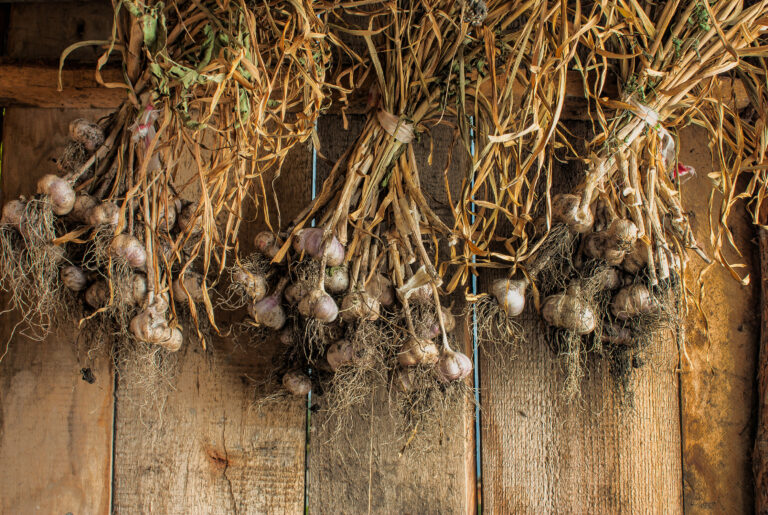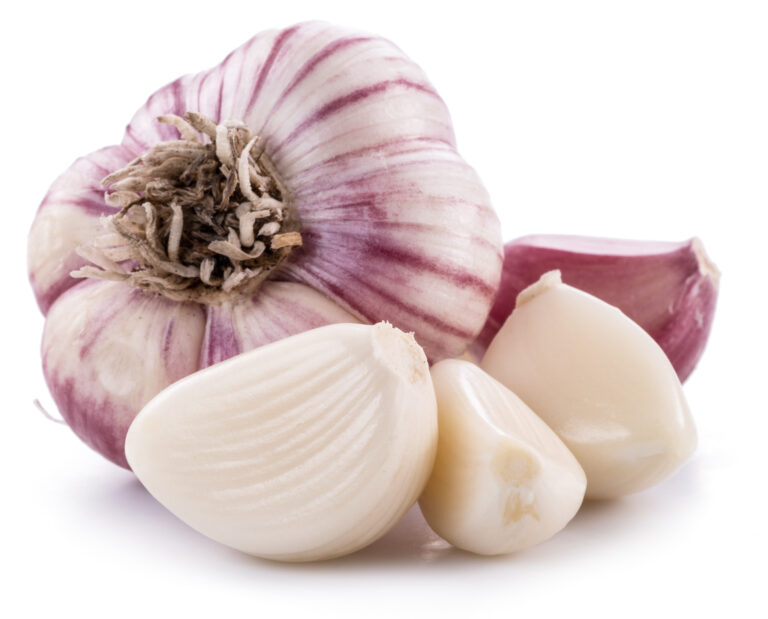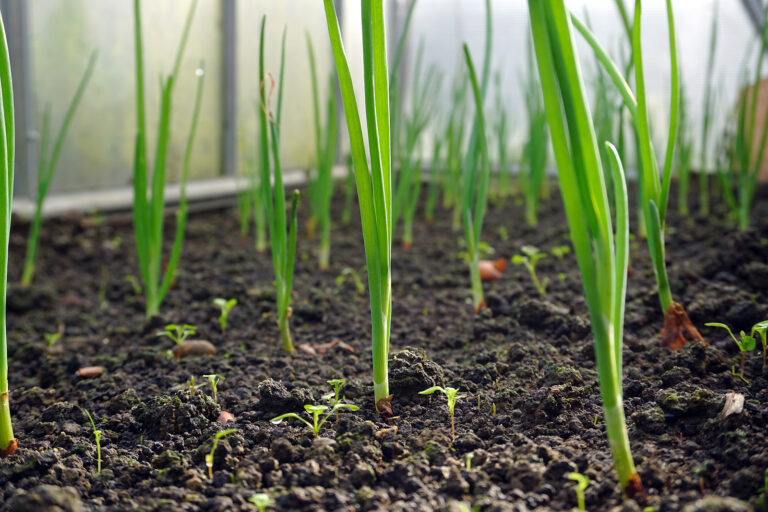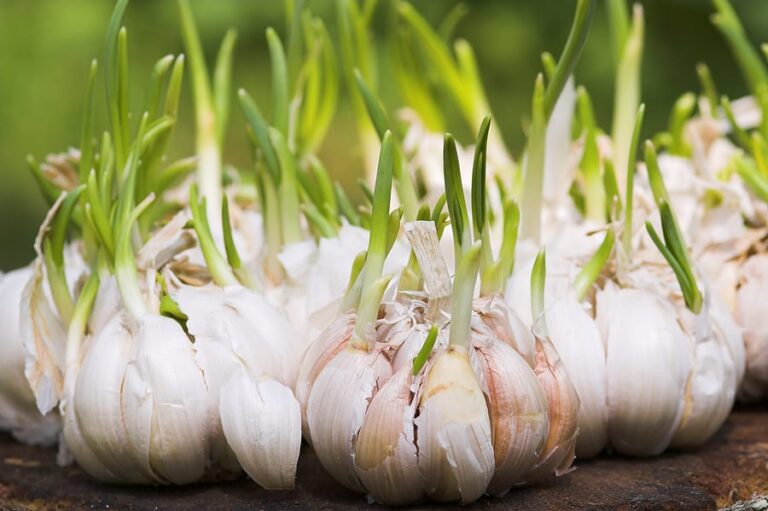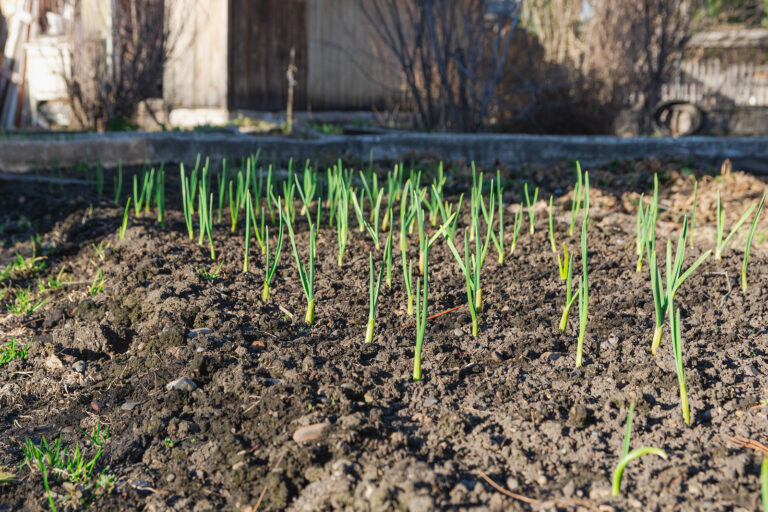Growing Bulb Onions: Pick the Right Variety for Your Garden
Bulb onions are particular about where they grow. Onion bulb development is highly dependent on daylight and temperature. Not all onions will form bulbs where you live. You must pick the right onion variety for your garden if you are growing onions for bulbs.
Onion bulb formation is triggered by the number of summer daylight hours. Here are the three types of bulbing onions:
- Long-day onions require about 15 hours of summer daylight.
- Short-day onions require about 12 hours of summer daylight.
- Day-neutral (also called intermediate-day) onions that are not affected by the number of daylight hours. (Day-neutral onions are modern hybrids, bred to not be sensitive to day length.)
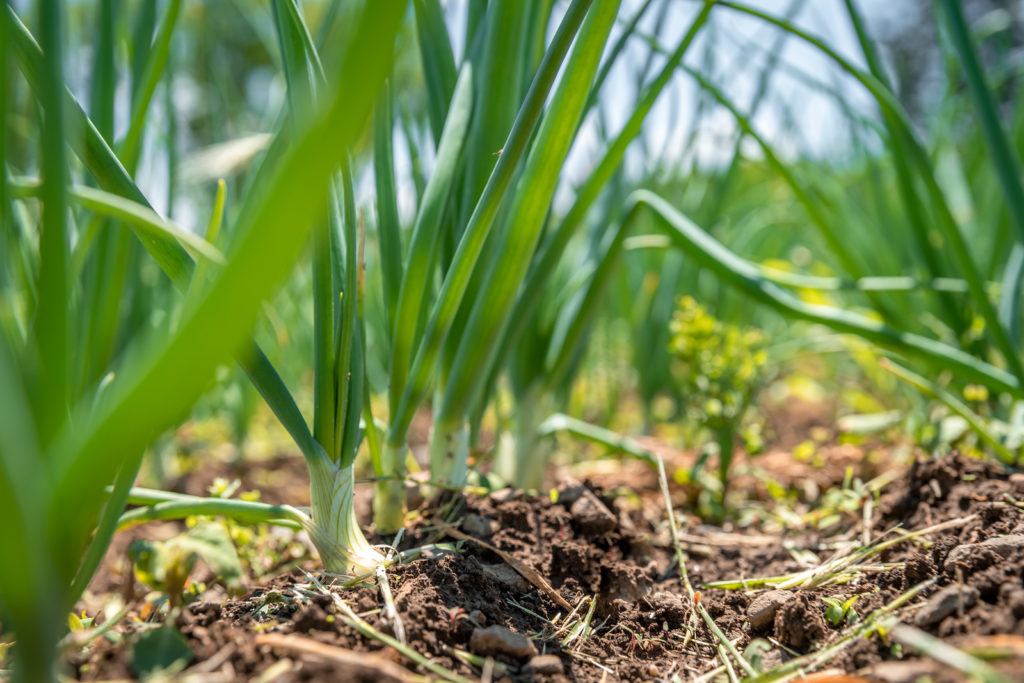
Daylight hours and onion bulb formation
Here are daylight hour basics you need to know to grow onions in your garden:
- Onion bulb development is highly dependent on daylight. Onions quit forming leafy tops and begin to form bulbs when the daylight each day reaches a certain length. The amount of daylight needed for an onion plant to begin forming a bulb varies by variety.
- Be reminded that the length of daylight in your part of the world varies throughout the year depending upon latitude. The variation in daylight is caused by the tilt of the Earth’s axis of rotation as it makes its year-long ecliptic journey around the sun. At the solstice occurring about June 20–22, the north pole is tilted toward the sun, and so the northern hemisphere has days ranging in duration from just over 12 hours in the southern portion of the Northern Hemisphere—closest to the equator–to 24 hours at the North Pole in the Arctic Circle. (At the same time in the southern hemisphere days range in duration from just under 12 hours in the northern portion of the southern hemisphere to no daylight at the South Pole. This is, of course, reversed at the solstice occurs about December 20–22. At the equinox occurring about March 19–21 and again about September 22–23, the poles are neither tilted toward nor away from the sun, and a day is generally about 12 hours all over the Earth.)
- In each hemisphere, the higher the latitude (or distance from the Equator), the longer the number of daylight hours during the summer and the shorter the number of daylight hours during the winter.
- Because location or latitude determines day length, some onion varieties are not suited for some locations.
- Short-day onions require just 12 to 14 hours of daylight each day to form bulbs. This happens in the southern regions of the northern hemisphere to not greater than latitude 36°N.
- Intermediate-day onions require 13 to 15 hours of daylight each day to form bulbs. Intermediate-day onions grow best between latitudes 35° to 38°N–but many are adapted for production to latitude 42°N.
- Long-day onions require 14 to 16 hours of daylight each day to form bulbs. Long-day onions do the best north of the 36th parallel or latitude 36°N.

Temperature and onion bulb formation
Here are the temperature basics you need to know to grow onions in your garden:
- Onion seeds sprout usually within 7 to 10 days. The minimum temperature for sprouting is 55°F (12.8°C); as the soil temperature increases from 55°F to 75°F the percentage of seeds sprouting will increase and the time to emergence decreases.
- Onions are adapted to a wide range of temperatures and they are frost tolerant. Leaf, root, and bulb development occurs in cool temperatures between 55° to 75°F. Optimal onion leaf growth occurs at 68° to 77°F (20° to 25°C). Once bulbing has begun onions easily tolerate temperatures higher than 75°F.
- Bolting—the setting of seed and cessation of bulb development–is driven by temperatures between 40° to 50° (7.2° to 10°C). (Plant variety, planting date, plant size, temperature, and duration of temperature all factor into whether and when an onion plant bolts.)
How onions grow
An onion bulb is a short underground stem. From the base of the stem, roots grow down and leaves grow up. The onion plant has a fan of hollow, bluish-green leaves. Each leaf is connected to its underground stem; the larger the leaf the larger its underground stem. The greater the number of large leaves, the greater the size of the bulb beneath the ground; each leaf corresponds to a ring of the onion bulb; the larger the leaf the larger the ring. (As with all plant stems, the onion stems or leaf bases store nutrient reserves for growing the plant.)
Onions are photothermoperiodic; which means they are sensitive to temperature and also to daylight. Onions quit forming leafy tops and begin to enlarge their underground stems (bulbs) when the daylight each day reaches a certain length. The amount of daylight needed for an onion plant to begin forming a bulb varies by variety; each variety has its own genetically determined bulb formation trigger.
Day length or daylight hours—determined by the sun tracking north in the northern hemisphere during the spring and summer and south during the fall and winter—stimulates the onion plant to start making a bulb (and to stop making leafy growth). Each onion variety will form a bulb only after it has received a certain number of hours of daylight each day for a certain number of days. Onions are categorized into long-day (northern), intermediate-day (central), and short-day (southern) varieties.
Temperature stimulates the onion plant to stop making a bulb and begin sending up flower shoots and forming seeds—called bolting. Once an onion reaches a certain size—and again this differs by variety—temperatures of between 40° and 50°F (4° to 10°C), will cause it to bolt. (Onions are cool-season biennial plants–meaning they require two seasons to complete the cycle from seed to seed; the two seasons are separated by winter cold.)
Which type of onion should you grow?
There are many varieties of onions suited for growing bulbs. When you choose a bulb onion variety for your garden (and your growing region), it is important to know how many daylight hours you will have during the growing season and the low and average temperatures during that time.
Onions first form tops—leaves—then (depending upon the variety and day length) start to form bulbs. For example, long-day onions will quit forming tops and begin forming bulbs when the day length reaches 14 to 16 hours while short-day onions will start making bulbs much earlier in the year—when there are only 10 to 12 hours of daylight.
It’s relatively easy to know which type of onion you should grow in your garden. It depends upon where you live.
Draw an imaginary line across the country from San Francisco to the north of the Carolinas. Do you live north or south of this line?
- Summer daylight north of this line is 14 to 16 hours long or longer: grow long-day onions.
- Summer daylight south of this line is about 10 to 12 hours: grow short-day onions.
- Not sure, too-much trouble to figure this out: grow day-neutral onions.
In short: long-day onions grow the best north of the 40th parallel; short-day onions grow the best south of the 28th parallel; day-neutral onions are the best bet between the 28th and 40th parallel.
What happens if you make a mistake? Long-day varieties grown in the South will never form bulbs because the days are not long enough. Short-day varieties grown in the North will form bulbs early but the bulbs will be small and weak because the plant has not grown strong enough to grow large, mature bulbs.
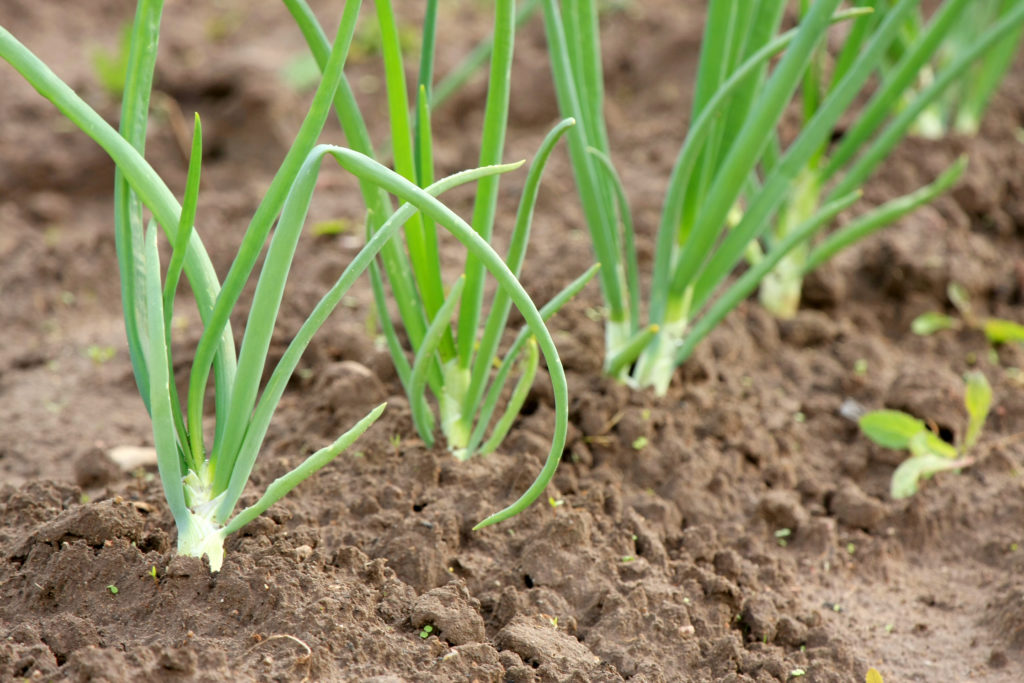
When to plant bulbing onions in your garden
Here’s when you should plant onions to grow mature bulbs:
- Long-day varieties (growing in northern regions) should be started 10 to12 weeks before the last frost in spring: direct-sow seed in a plastic tunnel or cold frame, or sow seed indoors for transplanting into the garden 4 to 4 weeks before the last frost in spring. Harvest will come in late summer or early fall depending upon the variety.
- Short-day varieties (growing in southern regions) should be planted mid-fall to mid-winter either directly sown or started in the garden with onion sets or transplants. Harvest will come in late summer or early fall depending upon the variety.
- Day-neutral varieties (planted either in northern or southern regions) can be planted in mid-fall to early spring in mild-winter regions and early spring in cold-winter regions. Harvest will come in late summer or early fall depending upon the variety.
Bulb onion growing tips
- Long-day onion varieties need fourteen to fifteen hours of daylight to make a bulb; these varieties grow best in northern states and Canada. Northern European and Alaskan varieties need sixteen hours or more. No long-day varieties can receive enough hours of daylight in southern states to make a bulb. If you plant a long-day variety in a southern region your crop will always fail to set bulbs; your crop can be used for scallions (green onions).
- To grow short-day onions in northern regions, seed them in the fall, or plant intermediate varieties in late winter.
- In southern regions, sow short-day onion varieties in spring and also in late autumn in regions where there is little or no frost.
- In southern regions, sow intermediate-day onion varieties in late winter, about February, for harvest in summer.
- A space-wise way to grow onions is in multiple rows on beds 36- to 42-inches wide.
- Sow onion seeds ¼ inch to ½ inch deep.
- Add phosphorus-rich fertilizer across the planting bed before sowing, about ½ cup per 10-row feet.
- Plant or thin globe onions to 3 to 4 inches apart to insure adequate bulb expansion. (Thinned plants can be used for scallions or for transplanting to another area of the garden.)
- Keep soil moist until germination and foliage growth. Use drip or sprinkler irrigation or furrows in the center of the bed.
- Protect young bulb onion seedlings from freezing temperatures which will kill plants. Onion plants less than a pencil in width should be protected from frost. If a young onion plant survives a freeze, the plant will likely bolt as soon as temperatures begin to rise in the spring. Fall-seeded crops are susceptible to bolting the following spring if warm fall temperatures bring on excessive foliage growth and are followed by low winter temperatures and slowed growth.
- Onion bolting—sending up a flower stalk and setting seed–is caused by temperatures of 40° to 45°F or below. Flowering causes a decrease in bulb size.
- Once bulbs have fully formed, many gardeners knock or bend over plant tops or stalks to stop foliage growth and allow bulbs to ripen; this practice is not essential according to many tests.
Bulb onion varieties to grow
Short-day varieties
- Short-day onions include ‘Granex’ or ‘Grano’ type onions, ‘Yellow Bermuda’, ‘White Creole’, ‘Eclipse’, ‘California Early Red’, ‘Ebenezer’, ‘Georgia Sweet’, ‘Sweet Red’, ‘Texas Super Sweet’, ‘Texas Sweet White’, ‘Yellow Granex’ (Vidalia), ‘White Granex’, ‘White Bermuda’, and ‘Early Strasburg’. Short-day onions are generally considered non-storage or short-storage because they are soft-skinned and easily bruised or cut.
Long-day varieties
- Long-day onions include ‘Walla Walla’, ‘White Sweet Spanish’, ‘Yellow Sweet Spanish’, ‘Yellow Globe Danvers’, ‘Yellow Flat Grant’, ‘Yellow Rynsburg’, ‘Zittan Yellow’, and ‘Sweet Spanish’.
Intermediate-day varieties
- Intermediate-day onions are derivatives of ‘Sweet Spanish’ types; they include ‘Stockton Red Globe’, ‘Early Yellow Globe’, ‘Australian Brown’, ‘White Portugal’, ‘Southport Yellow Globe’, ‘Red Wethersfield’, ‘Southport Red Globe’, ‘Italian Red’, ‘Red Candy Apple’, ‘Supstar’, and ‘Flat Madeira’. All of these are hybrids.
Onion Growing Hub
Start here: The Ultimate Onion Growing Guide: From Seed to Harvest
🌱 Planning & Varieties
- How to Choose the Best Onion Varieties for Your Region – Match flavor, storage, and climate to your garden.
- Daylength and Onion Growth: Understanding Short, Intermediate, and Long-Day Varieties – Pick the right type for your latitude.
- Growing Bulb Onions: Pick the Right Variety for Your Garden – Choose the right variety for where you live.
- Onion Sets vs. Seedlings vs. Seeds: Which Is Best for Your Garden? – Pros and cons of each planting method.
🌿 Planting & Starting
- Step-by-Step Guide to Starting Onion Seeds Indoors Successfully – Timing and troubleshooting for strong transplants.
- Planting Onions Seeds and Sets – Here’s how to get started.
- How to Grow Onion Sets – You can grow your own onion sets from seed for next year.
- Growing Onions in Containers: Soil, Pots, and Care Tips – Small-space planting success.
- How to Grow Green Onions, Spring Onions, and Scallions – Learn how these alliums differ.
- How to Plant, Grow, and Harvest Welsh Onions – Learn to grow these mild-flavored members of the onion family.
🌞 Care & Maintenance
- Watering Onions for Optimal Growth: Techniques and Tips – How much and how often to water.
- Feeding and Fertilizing Onions: Organic and Synthetic Options – Nutrient needs for strong bulbs.
- Companion Planting with Onions: Plants to Grow With and Avoid – Beneficial pairings and plants to avoid.
- Onion Family Growing Problems: Pest, Disease, and Problem Controls – Natural control of thrips, maggots, and more; identifying and treating fungal or bacterial problems.
🧅 Harvest & Storage
- How to Harvest Onions at Peak Maturity for Best Storage – Signs onions are ready and how to cure.
- How to Harvest and Store Onions – Here are the basics for harvesting and storing onions.
- Onion Storage Techniques: Keep Your Harvest Fresh for Months – Best environments for long-term keeping.
🍳 Using Your Onions
- Cooking with Onions: Recipes and Tips to Bring Out Flavor – From fresh salads to caramelized dishes.
- How to Make Onion Soup with No Recipe – Enjoy this tasty classic!
Onion articles at Harvest to Table:
How to Grow Green Onions, Spring Onions, and Scallions
Growing Onion Bulbs: Pick the Right Variety for Your Garden
How to Plant, Grow, and Harvest Welsh Onions
How to Harvest and Store Onions
Onion Family Growing Problems: Troubleshooting
Onion Cooking and Serving Tips
Tasty Ways to Cook and Serve Shallots
How to Make Onion Soup with No Recipe
How to Plant, Grow, and Harvest Shallots
English Peas, Spring Onions and Roasted Almonds
Tropea Onion – The Red Torpedo
Garden Planning Books at Amazon:


